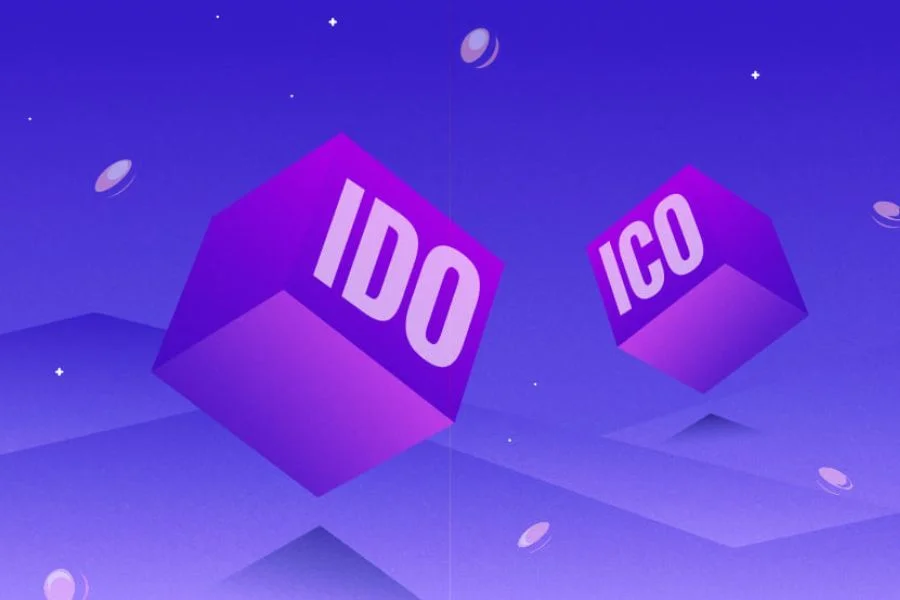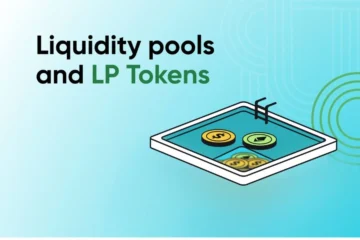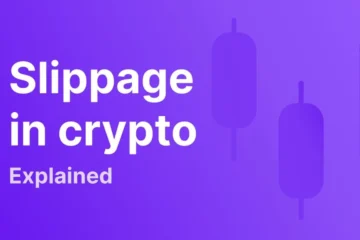An Initial DEX Offering (IDO) is a decentralized way for crypto projects to raise funds by launching tokens directly on a decentralized exchange. Compared to ICOs, IDOs offer faster access, built-in liquidity, and greater transparency, but still carry risks like volatility and scams. While ICOs dominated the 2017–2018 era, the industry’s push for decentralization has made IDOs the go-to method for many new projects. Investors should still research thoroughly before participating, as both models have their pros and cons.
Table of Contents
The crypto fundraising space evolves faster than most people can keep up. Just when investors thought they had wrapped their heads around ICOs (Initial Coin Offerings), IEOs (Initial Exchange Offerings) entered the chat. And now, IDOs (Initial DEX Offerings) are making waves as the next big thing.
So, what exactly is an Initial DEX Offering, and why is it being hailed as a more efficient, transparent, and accessible way to launch crypto projects? More importantly, how does it stack up against ICOs, the fundraising format that once ruled the crypto world? Let’s break it down.
Initial DEX Offering Explained — The Basics
An Initial DEX Offering (IDO) is a fundraising method where a cryptocurrency project launches its token directly on a Decentralized Exchange (DEX).
Instead of relying on centralized platforms or private investors, an IDO leverages automated, blockchain-based marketplaces like Uniswap, PancakeSwap, or SushiSwap. This means the fundraising, token sale, and distribution all happen without a middleman.
Here’s how it typically works:
- Project Listing – The project creates a new token and partners with a DEX.
- Liquidity Pool Creation – The project deposits a set number of tokens and a corresponding amount of a base cryptocurrency (like ETH or BNB) into a liquidity pool.
- Public Access – Investors can buy the token directly from the pool during the IDO event.
- Post-Sale Trading – Once the IDO ends, the token remains tradable on the DEX.
The idea is simple: speed, transparency, and decentralization from day one.
Also Read: What Is an Oracle in Crypto and Why Smart Contracts Rely on Them
How ICOs Worked — A Quick Recap
Before IDOs became popular, Initial Coin Offerings (ICOs) were the go-to method for raising capital in crypto.
In an ICO:
- The project sells tokens directly to investors, often through its website.
- Payment is typically made in Bitcoin, Ethereum, or another major cryptocurrency.
- Tokens are distributed after the sale ends — sometimes instantly, sometimes after weeks or months.
The problem? ICOs became infamous for scams, a lack of regulation, and investor losses. Many projects raised millions without ever delivering a product, leading to global crackdowns from regulators.
Key Differences — IDO vs ICO
While both ICOs and IDOs aim to raise funds by selling tokens, the way they operate is very different.
| Feature | ICO | IDO |
| Platform | Project’s own site | Decentralized Exchange (DEX) |
| Fundraising Process | Direct token sales | Automated liquidity pools |
| Accessibility | Often limited by KYC/whitelists | Open to anyone with a compatible wallet |
| Token Distribution | May be delayed | Immediately upon purchase |
| Security & Trust | Higher scam risk | More transparency via smart contracts |
| Liquidity | Usually low at launch | Built-in liquidity from day one |
In short, IDOs bring instant liquidity and faster token access, while ICOs often struggle with trust and long waiting times.
Benefits of IDOs for Crypto Projects
- Instant Liquidity
By launching directly on a DEX, the token immediately has a market. This means investors don’t have to wait months for trading to start. - Lower Costs
There’s no need to pay hefty listing fees to centralized exchanges. - Global Accessibility
Anyone with a crypto wallet and internet access can participate — no need to rely on banks or brokers. - Decentralization from Day One
Since everything runs on smart contracts, there’s less room for manipulation and gatekeeping.
Also Read: How Token Burns Affect Cryptocurrency Prices: Explained Simply
Benefits of IDOs for Investors
- Fairer Access – No private pre-sales giving big discounts to early insiders.
- Immediate Trading – Tokens are tradable as soon as the sale ends.
- Transparency – Smart contracts handle the process, making it easier to verify.
Risks and Challenges of IDOs
Of course, IDOs aren’t perfect. They come with their own set of risks:
- Price Volatility – Tokens can skyrocket or crash within minutes of launch.
- Rug Pulls – While harder to execute than in ICOs, some projects still vanish after raising funds.
- Overhyped Projects – Just because it’s on a DEX doesn’t mean it’s legit.
Investor Tip: Always check the project’s whitepaper, team credibility, and whether the smart contract has been audited before jumping in.
Real-World Examples of Successful IDOs
- Uniswap (UNI) – While not a traditional fundraising IDO, UNI’s decentralized token distribution inspired many future launches.
- Axie Infinity (AXS) – Started as a small blockchain gaming project, later becoming a multi-billion-dollar ecosystem.
- SushiSwap (SUSHI) – Launched via an IDO, it quickly became one of the largest decentralized exchanges.
These successes show that IDOs can catapult projects into the big leagues — but only if there’s genuine utility behind the token.
Why Some Still Prefer ICOs
Despite their issues, ICOs aren’t entirely dead. Some projects still prefer them because:
- They allow more control over the sale process.
- They can raise large amounts quickly without relying on existing DEX liquidity.
- They appeal to certain investors who prefer direct project interaction.
However, with stricter regulations and a cautious investor base, ICOs have become far less common than they were in 2017–2018.
Also Read: What Is Hash Rate and Why Does It Matter in Bitcoin Mining?
The Future — Are IDOs Here to Stay?
The shift from ICOs to IDOs reflects the crypto industry’s broader move toward decentralization. By removing middlemen and increasing transparency, IDOs aim to rebuild trust in crypto fundraising.
That said, the IDO vs ICO debate isn’t really about which is “better” — it’s about which model works best for a specific project. In many cases, IDOs are the safer, faster, and more transparent choice.




